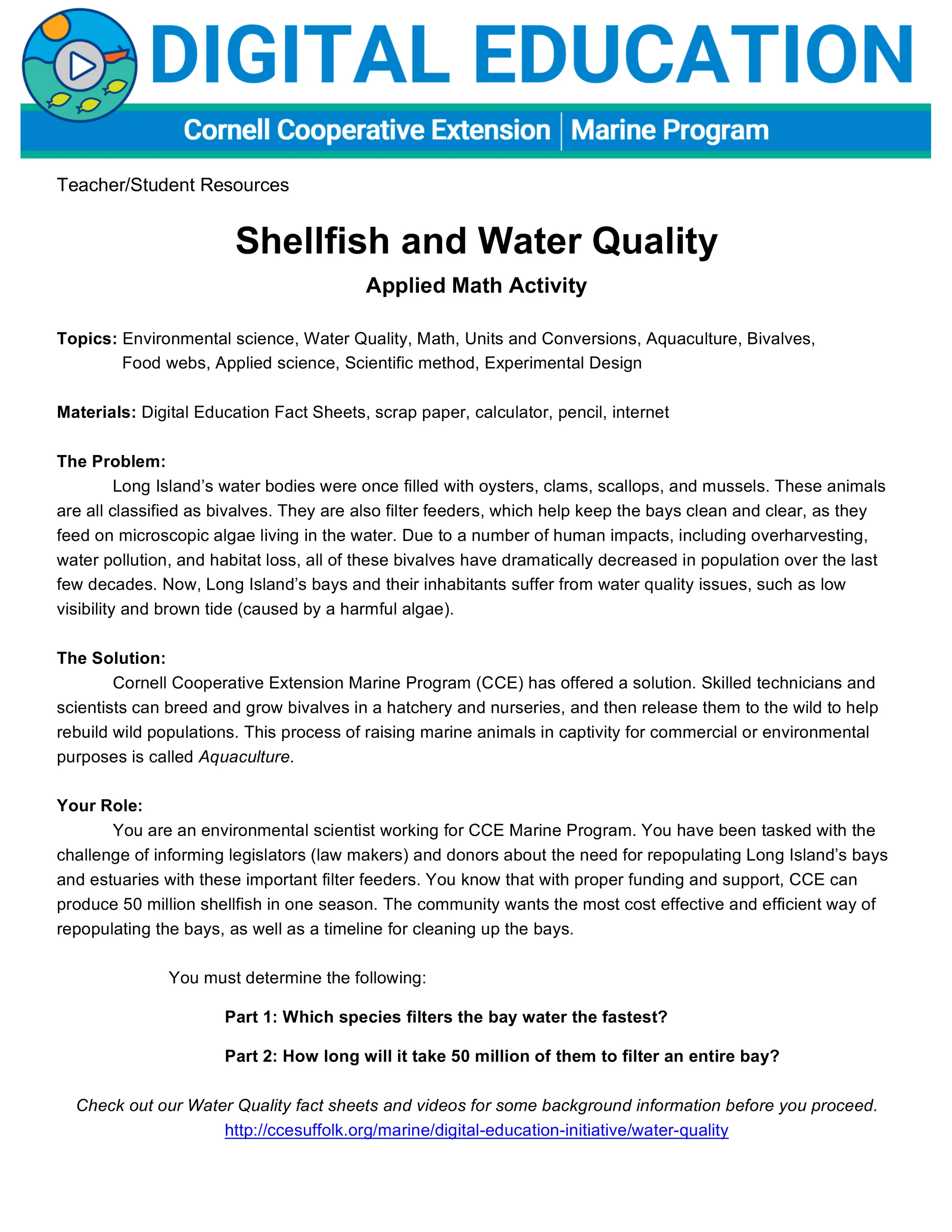The Eastern Oyster Crassostrea virginica
The species of oyster we have here on the East Coast is called the Eastern Oyster - scientific name, Crassostrea virginica. Oysters, along with their cousins, clams, scallops, and mussels, are classified as bivalves, meaning “two shells”. They belong to the mollusc phylum, along with snails and even octopus, most of which make a hard shell of calcium carbonate (limestone). In the first days of life, swimming larval oysters cement down onto hard surfaces forming spat. They can form clusters so large they act as reefs, much like a coral reef. This provides habitat for other creatures, prevents erosion of sediment, and acts as a storm barrier. Oysters are filter feeders and help keep our bays clean as they feed on microscopic algae, called phytoplankton. They do this by creating a current, taking in water through a siphon, filtering algae with their gills, and expelling clean water through a second siphon. A single adult oyster can filter up to 50 gallons of seawater per day! Clean water, reef engineering, and a delicious food source are just some of the many ecosystem services that oysters provide.
History of Oysters in NYC and Long Island
Once, New York Harbor and the nearby bays of Long Island were teeming with oysters. Hundreds of thousands of acres of oyster beds covered the shallow seafloors. The use of oysters as food, tools, and decoration dates back to the first inhabitant of these lands, the Native Americans. European colonizers took to this delicacy as well. By the 1800s and early 1900s, the oyster was as popular on the streets of NY as the hot dog is today. A dozen oysters on the half shell today could cost up to $30, but back then a few cents would get you all you could eat. Unfortunately, as the human population grew and our technology allowed us to take more and more, the oyster population crashed. Pollution from industrialization and nutrient runoff from agriculture, made for a difficult come back. Now, thanks to regulations like the Clean Water Act of 1970, NY and Long Island bays can support oyster populations once again. But, they need a little help.
Aquaculture
While wild populations lost their economic value, innovators were busy developing methods of farming oysters through aquaculture. Agriculture is to the chicken, as aquaculture is to the oyster. Like the name sounds, aquaculture is the raising of aquatic organisms in controlled or semi-controlled environments for the purposes of food and restoration. Cornell Cooperative Extension Marine Program operates a hatchery in Southold and partners with many other town hatcheries and local oyster growers to produce millions of shellfish. In the hatchery setting, male and female oysters are triggered to reproduce in captivity. Swimming larvae are fed the perfect blend of algae and cared for until they can settle as “spat on shell.” Outdoor floating nurseries continue to protect the developing oysters from predators, while providing a natural algae food source. Local oyster farmers tumble theirs to produce the individual “slurpable” product customers want. CCE’s mission is restoration, so when oysters are large enough they can be released into bays to repopulate or even built into reefs to protect shorelines.
Oyster Videos
Oyster Activities + Educational Resources
Oyster Quiz
After reading about oysters (top of page, Fast Facts) and watching the videos, test your knowledge about oysters with this Nearpod Quiz. Just enter a name to begin!











